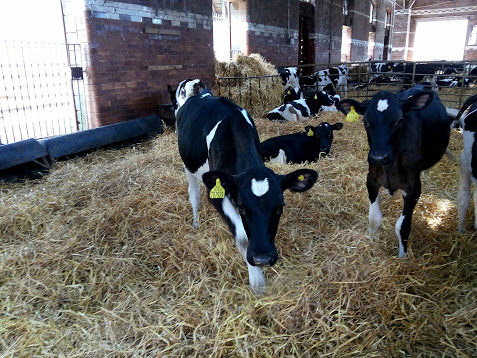Optimising Fertility in Dairy Heifers
2 December 2019The target age at first calving for dairy heifers of 24 months is proven to be the economic optimum, with these younger calving heifers being more productive and profitable than heifers calving between 26 to 30 months.
Age at first calving and fertility
The statistics on the effect of age at first calving and performance cannot be disputed. Improvements in fertility are evident, even in the second lactation, with a 20-day shorter calving to conception interval in heifers calving at 23-25 months compared to heifers calving between 26-30 months (see table below). Profitability is 30% greater, as better fertility means that younger calving heifers spend a higher proportion of their life in milk. There are also generally more calving difficulties with older calving heifers, meaning a greater risk of poorer milking performance and a higher cull rate for these animals.
| 23-25 months | 26-30 months | >30 months | |
|---|---|---|---|
| Better fertility: | |||
| 1st service conception rate (L1)* | 42% | 39% | 32% |
| Days to conception (L1)* | 117 | 137 | 170 |
| 1st service conception rate (L2)* | 47% | 35% | 33% |
| Days to conception (L2)* | 111 | 133 | 144 |
| More milk: | |||
| Total 5 year milk yield (kg) | 22477 | 20605 | 15777 |
| Note: L1=Lactation 1 L2=Lactation 2 | Source: Cook et al, 2013 |
When does puberty begin?
The success of conception to first service is highly dependent on age at puberty (the onset of ovarian cyclicity), which is determined by body weight. Therefore, growth of heifers, particularly from weaning to puberty, is crucial to get heifers pregnant by 15 months for calving down at 24 months. Ideally heifers must be well grown in order to cycle two to three times before they need to be inseminated. The first few heats may be erratic and ovulation may not occur, after which, heifers should come into season every 21 days (range 18-24 days). Heifers, just like cows are more fertile if they have shown a heat before they need to be inseminated, compared to those that are inseminated at their first heat.
Puberty begins when a heifer is around 40% of its mature body weight (260kg based on a 650kg mature weight). This weight must be reached by about 9 months of age so that heifers have two to three normal oestrus cycles before breeding at 55% of mature body weight (~360kg). Good heifer management, health status and appropriate nutrition are essential to achieve the correct weight at various stages throughout the rearing period and frame size at calving.
Oestrus synchronisation
There are advantages of oestrus synchronisation in heifers, especially for herds that are block calving and are aiming for a tight calving period. The main benefits of synchronisation are increased submission rates and higher pregnancy rates. Also, when heifers calf down they can be introduced as a group to the milking herd and milking regime, rather than individuals, lowering stress levels. Consideration must be given to whether there is sufficient labour and time available for heat detection, artificial insemination and handling facilities to cope with the number of synchronised heifers that will come into heat in a short period of time.
There are various treatment protocols available but the most common and cost-effective is to use intramuscular injections of prostaglandin and serve off observed heats over the next 11-14 days. A second injection for heifers that have not shown heat can be given, with fixed time insemination at 72 and then 96 hours later (or breed off observed heats). This programme can achieve submission rates close to 100% and conception rates to first service of 70%. A single service at 84 hours is also appropriate if labour is in short supply, but may reduce conception rates by 10-15%. This protocol will not work in heifers that are not cycling and a CIDR-synch programme may be necessary for them. Speak to your vet about the most appropriate synchronisation programme to maximise heifer fertility.
Lorna MacPherson for the Farm Advisory Service
Sign up to the FAS newsletter
Receive updates on news, events and publications from Scotland’s Farm Advisory Service

